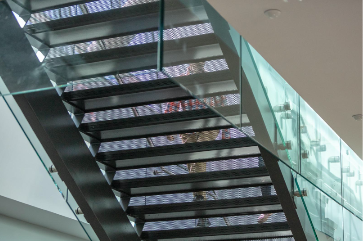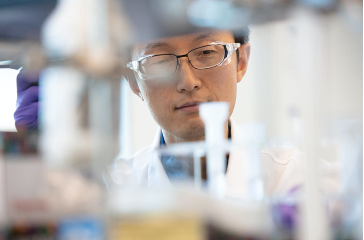FDA Approves Expanded Age Indication for GARDASIL® 9 in Males
December 15, 2015 5:07 pm ET
GARDASIL 9 Now Approved for Males 16 through 26 Years of Age for the Prevention of Anal Cancers and Genital Warts Caused by Nine HPV types
Merck (NYSE: MRK), known as MSD outside the United States and Canada,
announced today that the U.S. Food and Drug Administration (FDA)
approved an expanded age indication for GARDASIL®9 (Human
Papillomavirus 9-valent Vaccine, Recombinant), Merck’s 9-valent human
papillomavirus (HPV) vaccine, to now include use in males 16 through 26
years of age, for the prevention of anal cancer caused by HPV types 16,
18, 31, 33, 45, 52 and 58, precancerous or dysplastic lesions caused by
HPV types 6, 11, 16, 18, 31, 33, 45, 52 and 58, and genital warts caused
by HPV types 6 and 11. GARDASIL 9 is already approved for use in boys 9
through 15 years of age for the prevention of these diseases. GARDASIL 9
is also approved for use in girls and young women 9 through 26 years of
age for the prevention of cervical, vulvar, vaginal, and anal cancers
caused by HPV 16, 18, 31, 33, 45, 52 and 58, precancerous or dysplastic
lesions caused by HPV 6, 11, 16, 18, 31, 33, 45, 52, and 58, and genital
warts caused by HPV types 6 and 11. GARDASIL 9 is contraindicated in
individuals with hypersensitivity, including severe allergic reactions
to yeast, or after a previous dose of GARDASIL 9 or GARDASIL®
[Human Papillomavirus Quadrivalent (Types 6, 11, 16, and 18) Vaccine,
Recombinant].
“This is an important approval that now aligns the indication for
GARDASIL 9 in males and females ages 9 through 26 to that of GARDASIL,
and also supports the CDC’s HPV vaccine recommendations for use in
males,” said Jacques Cholat, M.D., president, Merck Vaccines. “We are
pleased that males 16 through 26 years of age will now have access to
GARDASIL 9, which includes the most HPV types, to help further reduce
the burden of HPV-related diseases.”
GARDASIL 9 (Human Papillomavirus 9-valent Vaccine, Recombinant) includes
the greatest number of HPV types in any available HPV vaccine. GARDASIL
9 adds protection against five additional HPV types — 31, 33, 45, 52
and 58 — in addition to the four original HPV types covered by GARDASIL
[Human Papillomavirus Quadrivalent (Types 6, 11, 16, and 18) Vaccine,
Recombinant]. Seven HPV types in GARDASIL 9 (HPV 16, 18, 31, 33, 45, 52
and 58) cause approximately 90-95 percent of HPV-related anal cancers,
approximately 90 percent of cervical cancers, and approximately 80
percent of high-grade cervical lesions (cervical precancers, defined as
CIN 2 and CIN 3) worldwide. These seven HPV types also cause 90 percent
of HPV-related vulvar cancers and 85 percent of HPV-related vaginal
cancers. HPV types 6 and 11 cause approximately 90 percent of genital
warts cases in males and females.
Not all vulvar, vaginal, and anal cancers are caused by HPV, and
GARDASIL 9 protects only against those vulvar, vaginal, and anal cancers
caused by HPV 16, 18, 31, 33, 45, 52 and 58.
CDC’s ACIP Recommendations
Following its February 2015 meeting, the Centers for Disease Control and
Prevention’s Advisory Committee on Immunization Practices (ACIP)
included GARDASIL 9 in the HPV vaccination recommendations, which added
it to the routine recommendations for vaccination of males and females
11 and 12 years of age. The HPV vaccination series can be started at age
nine. Only GARDASIL 9 and GARDASIL are indicated and recommended for use
in males in the United States. The ACIP also recommends HPV vaccination
for females 13 through 26 years of age and for males 13 through 21 years
of age who have not been vaccinated previously or who have not completed
the 3-dose series.
GARDASIL 9 is covered under the CDC’s Vaccines for Children (VFC)
program for both boys and girls. Since 1994, the VFC program has
provided vaccines to children through the age of 18 who are
Medicaid-eligible, uninsured, underinsured, American Indian or Alaska
Native.
“While it is important to remember that the CDC’s ACIP recommends
routine HPV vaccination at age 11 or 12, before exposure to the HPV
virus, this expanded indication for GARDASIL 9 is exciting because now
16- through 26-year-old young men can get this HPV vaccine,” said Anna
Giuliano, Ph.D., founding director, Center for Infection Research in
Cancer, H. Lee Moffitt Cancer Center & Research Institute, Tampa, and
clinical investigator for GARDASIL 9. “It’s important that we
collectively work to increase HPV vaccination rates to help prevent
HPV-related cancers and diseases.”
CDC Reports Low HPV Vaccination Rates, Especially for Males
In 2014, the CDC made increasing HPV vaccination rates a public health
priority. According to the CDC, HPV vaccination rates are unacceptably
low compared to rates for other adolescent vaccines, and vaccination
coverage is especially low in males. In 2014, for boys 13 through 17
years of age, coverage with at least one dose of HPV vaccine was just
41.7 percent, and receipt of the recommended three doses was even lower
— just 21.6 percent.
A health care provider recommendation is very important in helping a
parent decide to get their son or daughter vaccinated against
HPV-related cancers and diseases, and the CDC encourages health care
providers to routinely recommend HPV vaccination at 11 or 12 years of
age with the same sense of importance used to recommend other adolescent
vaccines in order to increase vaccination rates and help protect more
individuals against HPV-related cancers and other diseases.
Availability and market transition information for GARDASIL 9 (Human
Papillomavirus 9-valent Vaccine, Recombinant)
GARDASIL 9 is available, and most managed care plans have already made
decisions to cover the cost of GARDASIL 9, including for males 16
through 26 years of age, making the number of plans covering GARDASIL 9
similar to the number covering the cost of GARDASIL [Human
Papillomavirus Quadrivalent (Types 6, 11, 16, and 18) Vaccine,
Recombinant]. The approval of GARDASIL 9 for males 16 through 26 years
of age is a milestone in the planned transition from GARDASIL to
GARDASIL 9, as both products are now approved for the same populations.
The goal in the United States is to fully transition from use of
GARDASIL to GARDASIL 9. Merck will ensure availability of and
communication around GARDASIL and GARDASIL 9 to allow for a smooth
transition.
GARDASIL 9 is available through Merck’s patient assistance program for
vaccines. Through this program, Merck provides free vaccines to adults
who are uninsured and who are unable to afford vaccines. More
information can be found at www.MerckHelps.com.
Clinical Program for Immunogenicity and Safety of GARDASIL 9 (Human
Papillomavirus 9-valent Vaccine, Recombinant) in Males 16 through 26
Years of Age
The clinical trial program for GARDASIL 9 was designed to build upon the
safety and efficacy established in clinical trials with GARDASIL [Human
Papillomavirus Quadrivalent (Types 6, 11, 16, and 18) Vaccine,
Recombinant]. The pivotal efficacy study in females 16 through 26 years
of age evaluated the efficacy of GARDASIL 9 to prevent HPV-related
cervical, vulvar, and vaginal disease using GARDASIL as a comparator.
Effectiveness of GARDASIL 9 against persistent infection and disease
related to the nine vaccine HPV types in males 16 through 26 years of
age was inferred from a non-inferiority comparison of type-specific
antibody geometric mean titers (GMTs) following vaccination with
GARDASIL 9 among heterosexual males 16 through 26 years of age with
those among females 16 through 26 years of age.
A total of 1,106 heterosexual males and 1,101 females were enrolled in
the study. The primary analyses were conducted in the per-protocol
population, in which study participants received all three vaccinations
within pre-defined day ranges, did not have major deviations from the
study protocol, and were seronegative to the relevant HPV type(s) prior
to dose one. The analyses found that anti-HPV GMTs at Month 7 among
males 16 through 26 years of age were non-inferior to anti-HPV GMTs
among females 16 through 26 years of age.
In the clinical studies with GARDASIL 9 in males 16 through 26 years of
age, the most common (≥10%) local and systemic adverse reactions
reported were injection-site pain (63.4%), injection-site swelling
(20.2%) and injection-site erythema (20.7%).
Important Information about GARDASIL 9
GARDASIL 9 does not eliminate the necessity for women to continue to
undergo recommended cervical cancer screening.
Recipients of GARDASIL 9 should not discontinue anal cancer screening if
it has been recommended by a health care provider.
GARDASIL 9 has not been demonstrated to provide protection against
disease from vaccine HPV types to which a person has previously been
exposed through sexual activity.
GARDASIL 9 has not been demonstrated to protect against diseases due to
HPV types other than 6, 11, 16, 18, 31, 33, 45, 52, and 58.
GARDASIL 9 is not a treatment for external genital lesions; cervical,
vulvar, vaginal, and anal cancers; CIN; VIN; VaIN; or AIN.
Not all vulvar, vaginal, and anal cancers are caused by HPV, and
GARDASIL 9 protects only against those vulvar, vaginal, and anal cancers
caused by HPV 16, 18, 31, 33, 45, 52 and 58.
Vaccination with GARDASIL 9 may not result in protection in all vaccine
recipients.
Select Safety Information for GARDASIL 9 (Human Papillomavirus
9-valent Vaccine, Recombinant)
GARDASIL 9 is contraindicated in individuals with hypersensitivity,
including severe allergic reactions to yeast, or after a previous dose
of GARDASIL 9 or GARDASIL [Human Papillomavirus Quadrivalent (Types 6,
11, 16, and 18) Vaccine, Recombinant].
Because vaccinees may develop syncope, sometimes resulting in falling
with injury, observation for 15 minutes after administration is
recommended. Syncope, sometimes associated with tonic-clonic movements
and other seizure-like activity, has been reported following HPV
vaccination. When syncope is associated with tonic-clonic movements, the
activity is usually transient and typically responds to restoring
cerebral perfusion by maintaining a supine or Trendelenburg position.
Dosage and administration for GARDASIL 9
GARDASIL 9 should be administered intramuscularly in the deltoid region
of the upper arm or in the higher anterolateral area of the thigh at the
following schedule: 0, 2 months, 6 months.
About HPV and related cancers and diseases
In the United States, HPV will infect most sexually active males and
females in their lifetime. According to the CDC, there are approximately
14 million new genital HPV infections in the United States each year,
half of which occur in people 15 through 24 years of age. For most
people, HPV clears on its own, but for others who don’t clear the virus,
it could lead to significant cancers and other diseases in males as well
as females, and there is no way to predict who will clear the virus.
HPV causes approximately 85-90 percent of anal cancers in both males and
females. According to the American Cancer Society, an estimated 2,600
men and 4,600 women in the United States will be diagnosed with anal
cancer in 2015, and overall rates have been increasing. There is no
routine screening recommended for the general population to reduce the
risk of anal cancer.
HPV causes approximately 90 percent of genital warts in both males and
females. There are approximately 360,000 cases of genital warts each
year in the United States. Treatment of genital warts can be painful,
and they may recur after treatment, especially in the first three
months. Approximately 3 out of 4 people get them after having genital
contact with someone who has genital warts.
In women, HPV also causes virtually all cervical cancer cases. Each day
another 35 women are diagnosed with cervical cancer in the United States
— about 12,900 women per year. HPV also causes approximately 70-75
percent of vaginal cancer cases and approximately 30 percent of vulvar
cancer cases in females. Additionally, there are an estimated 3 million
abnormal Pap results, many of which are caused by HPV, that require
follow-up each year in the United States.
About Merck
Today’s Merck is a global health care leader working to help the world
be well. Merck is known as MSD outside the United States and Canada.
Through our prescription medicines, vaccines, biologic therapies and
animal health products, we work with customers and operate in more than
140 countries to deliver innovative health solutions. We also
demonstrate our commitment to increasing access to health care through
far-reaching policies, programs and partnerships. For more information,
visit www.merck.com
and connect with us on Twitter,
Facebook,
YouTube
and LinkedIn.
Forward-Looking Statement of Merck & Co., Inc., Kenilworth, N.J., USA
This news release of Merck & Co., Inc., Kenilworth, N.J., USA (the
“company”) includes “forward-looking statements” within the meaning of
the safe harbor provisions of the U.S. Private Securities Litigation
Reform Act of 1995. These statements are based upon the current beliefs
and expectations of the company’s management and are subject to
significant risks and uncertainties. If underlying assumptions prove
inaccurate or risks or uncertainties materialize, actual results may
differ materially from those set forth in the forward-looking statements.
Risks and uncertainties include but are not limited to, general industry
conditions and competition; general economic factors, including interest
rate and currency exchange rate fluctuations; the impact of
pharmaceutical industry regulation and health care legislation in the
United States and internationally; global trends toward health care cost
containment; technological advances, new products and patents attained
by competitors; challenges inherent in new product development,
including obtaining regulatory approval; the company’s ability to
accurately predict future market conditions; manufacturing difficulties
or delays; financial instability of international economies and
sovereign risk; dependence on the effectiveness of the company’s patents
and other protections for innovative products; and the exposure to
litigation, including patent litigation, and/or regulatory actions.
The company undertakes no obligation to publicly update any
forward-looking statement, whether as a result of new information,
future events or otherwise. Additional factors that could cause results
to differ materially from those described in the forward-looking
statements can be found in the company’s 2014 Annual Report on Form 10-K
and the company’s other filings with the Securities and Exchange
Commission (SEC) available at the SEC’s Internet site (www.sec.gov).
Please see Prescribing Information for GARDASIL®9
(Human Papillomavirus 9-valent Vaccine, Recombinant) at https://www.merck.com/product/usa/pi_circulars/g/gardasil_9/gardasil_9_pi.pdf
and Patient Information for GARDASIL 9 at https://www.merck.com/product/usa/pi_circulars/g/gardasil_9/gardasil_9_ppi.pdf.
Merck
Media:
Pamela Eisele, 267-305-3558
or
Deb Wambold, 215-652-2913
or
Investors:
Teri Loxam, 908-740-1986
or
Justin Holko, 908-740-1879




